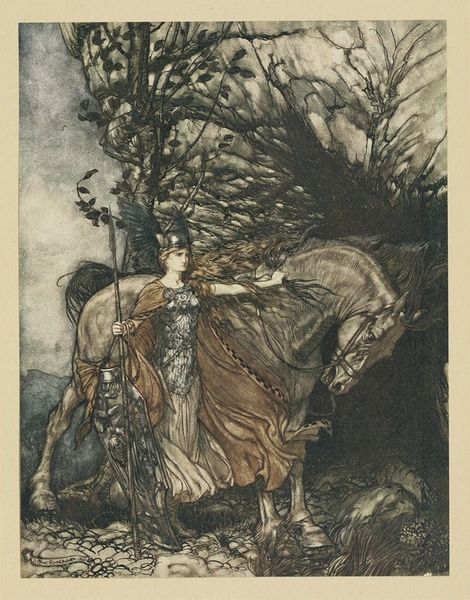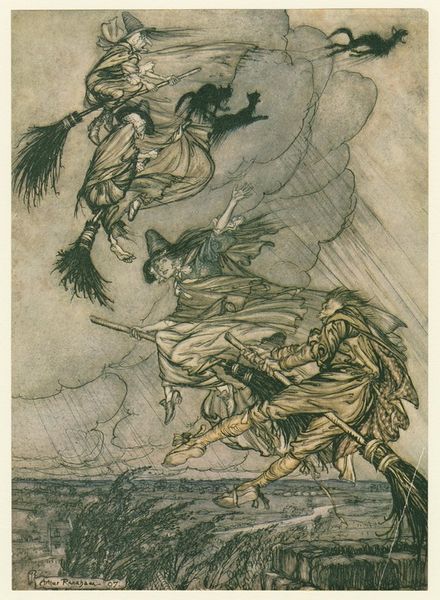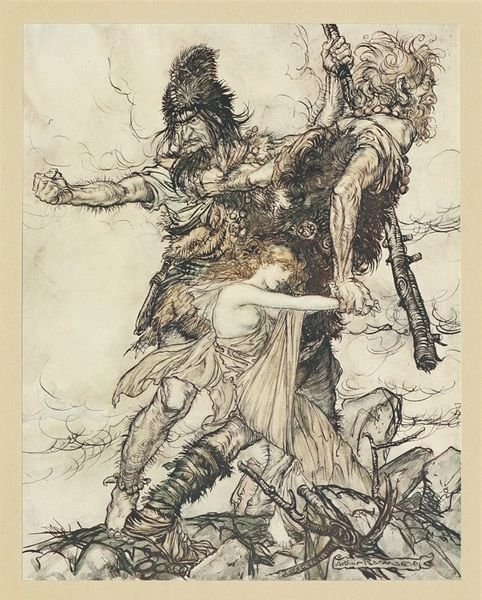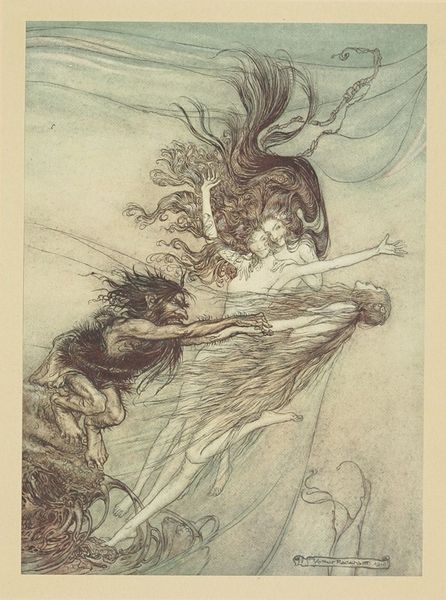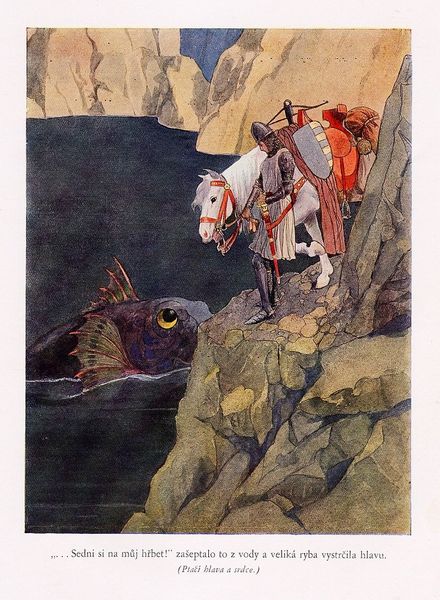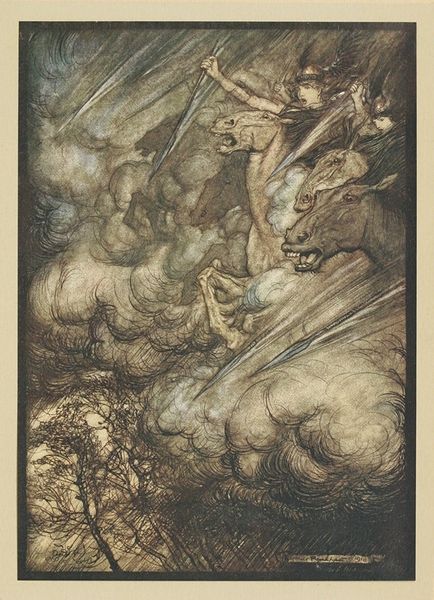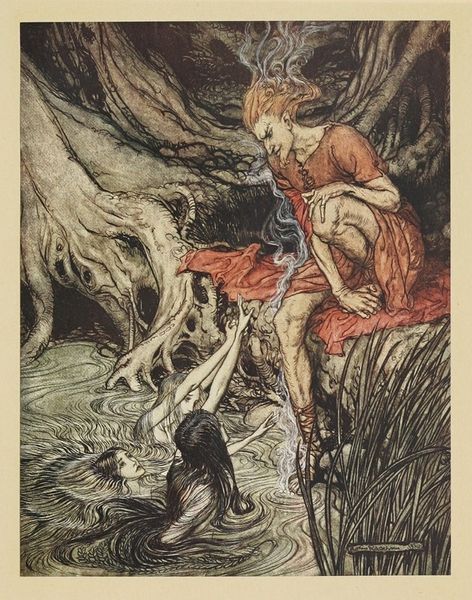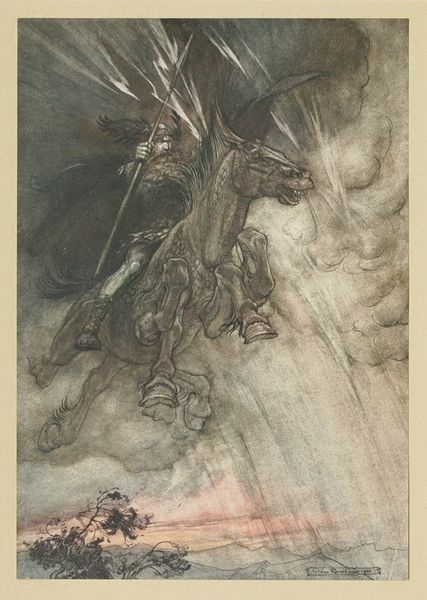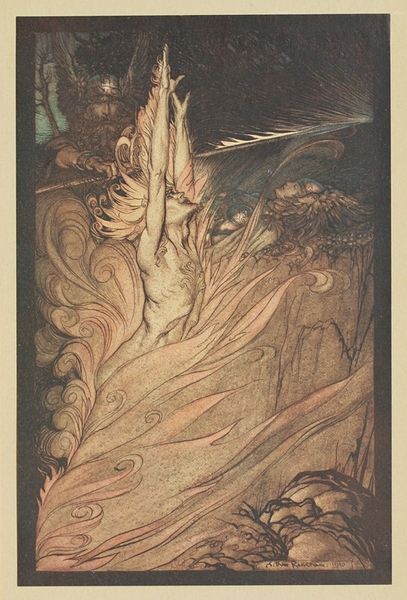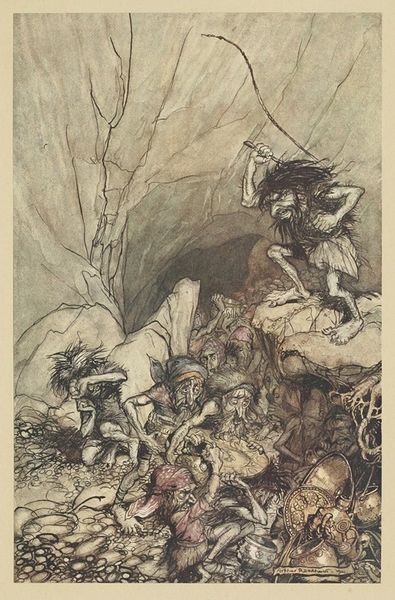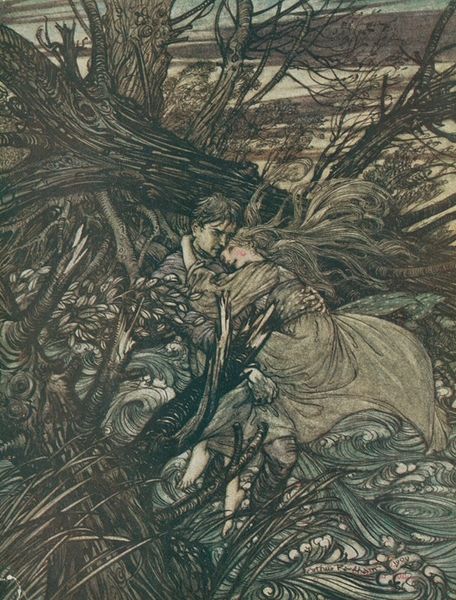
drawing, watercolor, ink
#
drawing
#
narrative-art
#
pen sketch
#
landscape
#
fantasy-art
#
figuration
#
watercolor
#
ink
#
symbolism
#
watercolour illustration
#
mixed medium
#
watercolor
Copyright: Public Domain: Artvee
Curator: This drawing is titled "Fricka Approaches in Anger," and it comes to us from the British illustrator Arthur Rackham in 1910. He worked primarily in ink and watercolor. Editor: Immediately, I'm struck by the cool, almost unsettling tone. The somber colors and gnarled linework give it a sense of foreboding. The figures, especially the rams, seem caught between reality and a shadowy dreamscape. Curator: Rackham made a name for himself illustrating fantasy and folklore. This piece served as an illustration for Richard Wagner's opera cycle "Der Ring des Nibelungen." Rackham created drawings to accompany translated editions of the stories. Editor: Yes, and it is interesting how he merges art nouveau with the symbolist aesthetic of the time. Look at the deliberate use of line. Rackham uses layering of thin strokes that feels quite evocative, with these strokes he is modelling forms and volume with amazing care. Notice the heavy outlines versus lighter lines within. The hatching technique to indicate shadow is wonderful! Curator: The popularity of the "Ring Cycle" led to increased public interest in Norse mythology and related artwork. Rackham benefited greatly from the early 20th-century revival of interest in such imagery, as he'd found a ready market for illustrated editions. Editor: Considering the subject matter, his stylized simplification of forms amplifies the scene's symbolic value. The deliberate staging creates symbolic tension, in the way Fricka is approaching but also how her gesture makes one ram disappear more into the foreground than the other ram, but she is approaching a huge tree that is twisted in form and rooted to the rock she also seems to be approaching. It amplifies the mythic quality you were suggesting earlier, Curator. Curator: And the distribution and mass appeal of these illustrated books, combined with the performances of the Wagnerian operas, arguably had an effect on how early 20th-century audiences came to visualize and even understand Wagner’s work, solidifying his cultural impact. Editor: Absolutely. The visual language here reinforces the epic scope, even in this small image. It is a fascinating example of the dialogue between musical and visual cultures at the time. Curator: It seems clear how visual narrative like this contributed to our wider collective memory. Editor: Indeed, making art the echo of greater social trends.
Comments
No comments
Be the first to comment and join the conversation on the ultimate creative platform.
